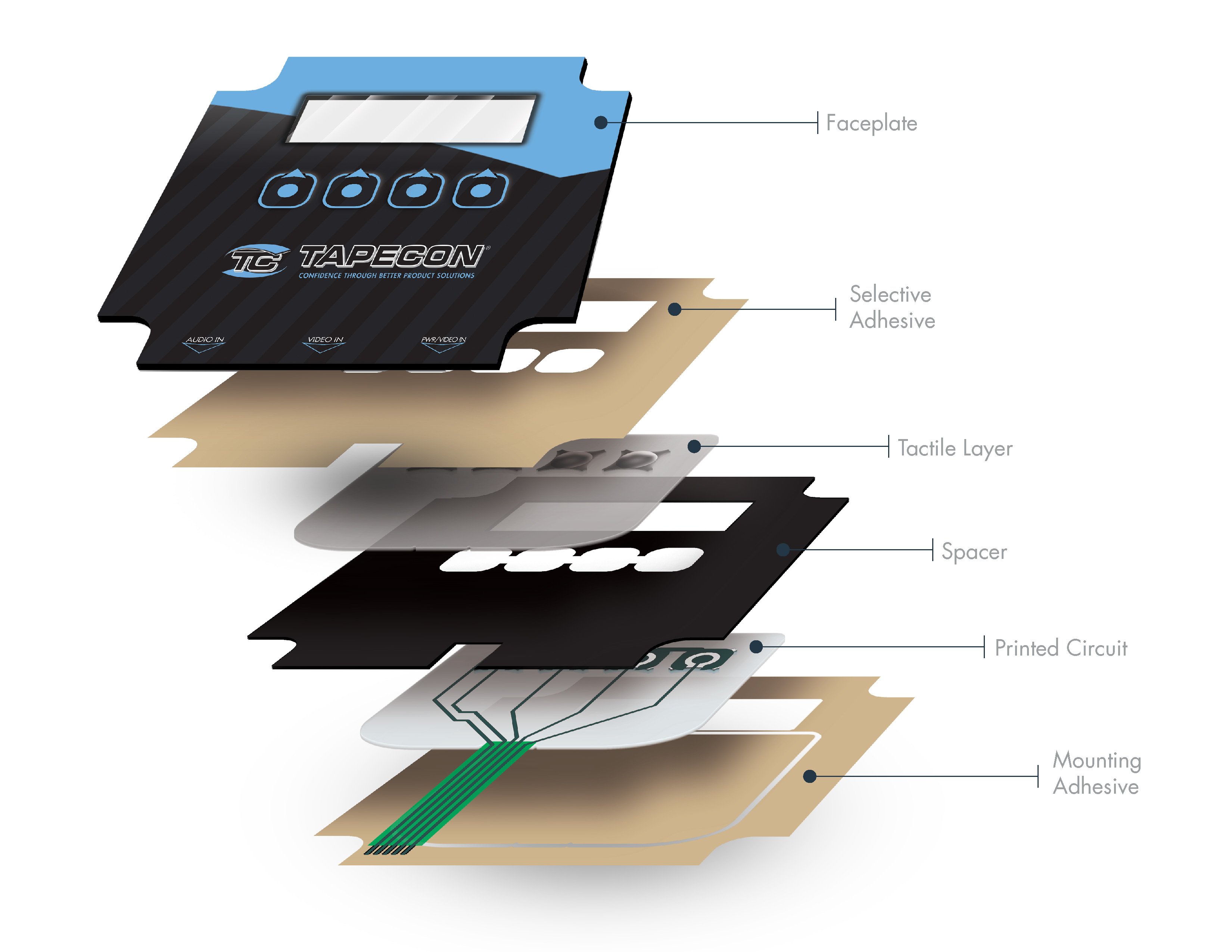The Function of a Membrane Switch in Modern Touch Interfaces and Controls
The Function of a Membrane Switch in Modern Touch Interfaces and Controls
Blog Article
Understanding the Functionality of Membrane Changes for Customer Interface Tools
The capability of membrane layer switches over represents a substantial advancement in individual interface design, combining effectiveness with visual adaptability. These buttons operate through a multi-layered framework that equates customer communications right into electrical signals, enabling for both compact designs and strength versus environmental aspects. As industries increasingly prioritize individual experience, understanding the nuances of membrane layer button technology becomes vital. What implications do these improvements hold for future applications, and exactly how might they redefine customer communications across various devices?
What Are Membrane Buttons?
Membrane layer switches are cutting-edge interface gadgets that facilitate user interaction with digital tools. These versatile elements contain several layers, consisting of a visuals overlay, spacer, and a published circuit layer. The design permits a smooth combination into different electronic tools, enhancing both the visual and functional elements of individual interfaces.
Membrane buttons are frequently utilized in a large range of applications, from family devices to commercial machinery and clinical tools. Their building and construction generally features a thin account, making them a perfect choice for small styles. The responsive responses supplied by these switches can be engineered to meet details individual choices, guaranteeing reliable interaction between the individual and the device.
Resilience is an additional substantial advantage of membrane layer buttons, as they are resistant to dirt, moisture, and chemicals, which boosts their lifespan sought after environments. In addition, these switches can be tailored in terms of shape, size, and graphic style, permitting branding and user-specific attributes. In general, membrane switches represent a useful solution for improving individual experience in electronic tools, combining performance with aesthetic charm in an efficient manner.
Exactly How Membrane Switches Job
Operating on an uncomplicated principle, membrane switches over utilize a layered building and construction to sign up user input efficiently. Each switch is composed of several layers, consisting of a published circuit layer, a spacer layer, and a top graphic layer, which are developed to function together seamlessly. When an individual presses the leading layer, it compresses the spacer layer, bringing the conductive aspects of the circuit layer right into call with each various other.
This call produces a shut circuit, signaling the gadget to implement a specific function. The design enables different setups, including tactile responses, which can boost the individual experience by supplying a physical experience upon activation. The materials made use of in membrane layer switches typically consist of flexible substratums, such as polyester or polycarbonate, which make certain durability and strength versus wear and tear.

Secret Advantages of Membrane Buttons

An additional significant benefit is their density. Membrane switches are thin and light-weight, which enables manufacturers to conserve room in their tools without sacrificing performance. This function is specifically helpful in applications where weight and quantity are essential considerations.
In addition, membrane layer switches are resistant to dust, moisture, and chemicals, improving their durability. This resilience extends their lifespan and lowers the requirement for regular replacements, leading to price savings with time.
In addition, the responsive responses provided by membrane layer buttons can be maximized to enhance individual communication. They can consist of attributes such as raised buttons or audible clicks, improving functionality and user experience.
Applications Across Industries
Interface devices using membrane layer switches prevail in a wide range of sectors, showcasing their adaptability and functionality. Membrane Switch. In the clinical field, membrane switches are indispensable to devices such as diagnostic equipment and client surveillance systems, where their sturdiness and convenience of cleaning are important for keeping health criteria. In the automobile sector, these buttons are used in control panel controls and infomercial systems, providing a sleek and contemporary user interface for top article individuals.
Moreover, the customer electronic devices sector gain from membrane switches in home appliances and handheld tools, where portable style and user-friendly user interfaces enhance customer experience. Industrial applications additionally utilize membrane layer changes for control board in equipment and automation systems, stressing their toughness and resistance to extreme atmospheres.
In the aerospace and defense sectors, membrane layer buttons are made use of in cockpit controls and tools, where reliability and efficiency under severe conditions are paramount. Additionally, the pc gaming sector increasingly incorporates membrane layer switches in controllers and game devices, adding to an interesting individual experience. Generally, the flexibility of membrane layer changes enables their prevalent usage across numerous industries, underscoring their value in modern-day individual interface design.
Future Fads in Membrane Switch Modern Technology

In addition, using innovative materials, such as polycarbonate and polyester movies, is expected to rise, offering improved longevity and resistance to environmental stressors. These products add to the total longevity of membrane Going Here switches, making them appropriate for harsher industrial applications.
Furthermore, the consolidation of smart modern technology, consisting of IoT connection, will certainly make it possible for membrane switches to connect with other gadgets and systems, promoting a more interactive user experience. This trend lines up with the expanding demand for smart tools across various industries, from health care to consumer electronic devices.
Last but not least, customization click here for more options are anticipated to broaden, allowing manufacturers to produce bespoke services customized to certain user needs and preferences. These growths will certainly place membrane layer switches as essential components in the evolution of interface technology.
Verdict
Finally, membrane layer changes represent a pivotal advancement in interface technology, supplying a trustworthy and flexible service for diverse digital applications. Their layered construction facilitates portable layout, while functions such as responsive feedback boost individual interaction. The resilience against environmental variables additionally solidifies their energy across numerous markets. As advancements in product science and touch picking up innovations continue, the performance and applicability of membrane buttons are expected to broaden, enhancing their value in contemporary digital gadgets.
Report this page